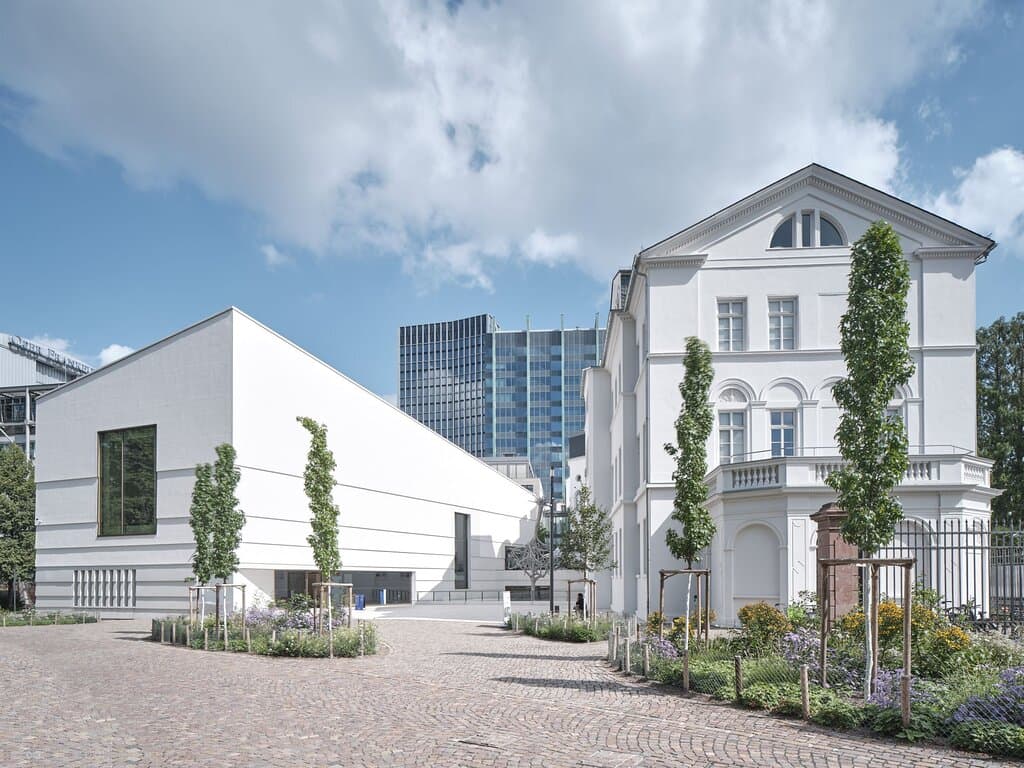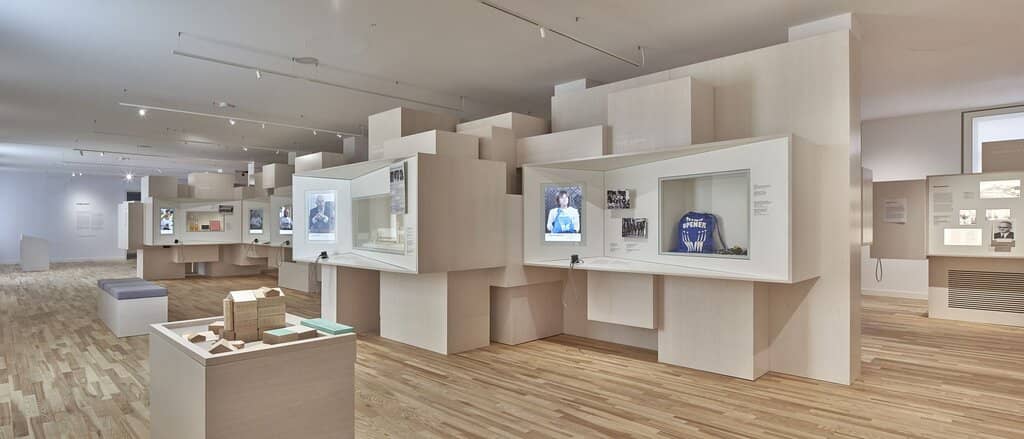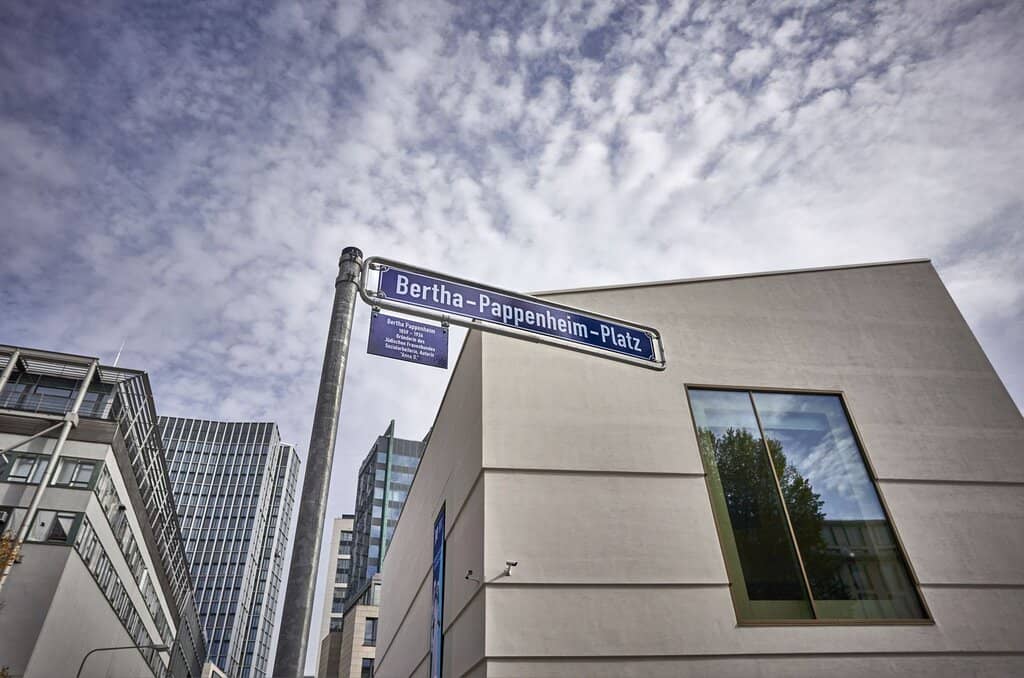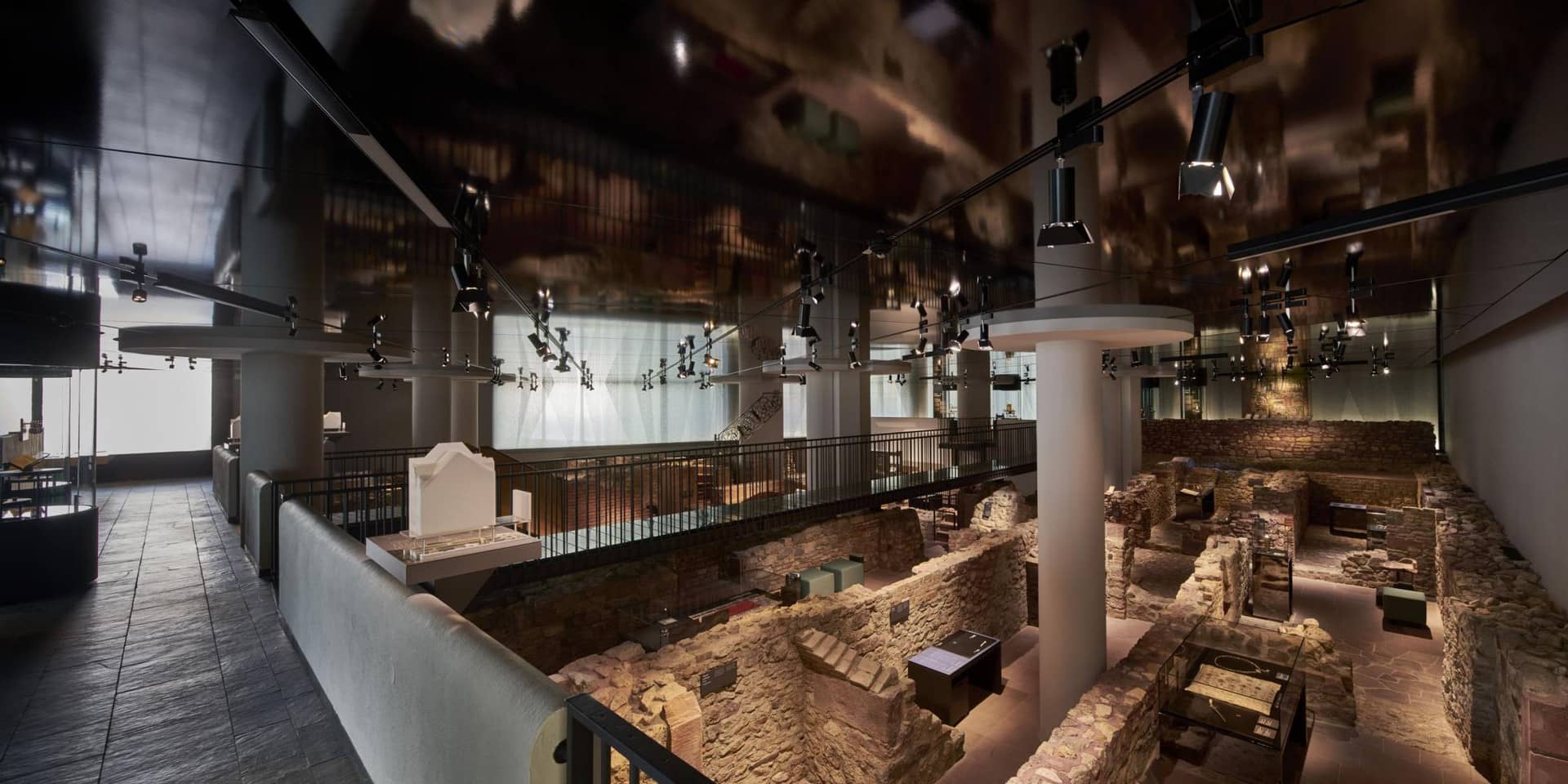
Jewish Museum Frankfurt
Explore 900 years of Jewish history and culture in Frankfurt, from medieval ghettos to modern life, within stunning historic and contemporary architec...

Highlights
Must-see attractions

Social
From TikTok & Reddit
Best Time
Fewer crowds, more reflection

Jewish Museum Frankfurt
Best Time
Fewer crowds, more reflection

Highlights
Must-see attractions
Explore 900 years of Jewish history and culture in Frankfurt, from medieval ghettos to modern life, within stunning historic and contemporary architecture.
"A great museum with lots of things to see, super interactive, and loved their focus on personal stories."

🗣️ Engage with Staff
Staff are knowledgeable and helpful, especially if you need help navigating the layout.
🍽️ Try the Cafe
Enjoy delicious vegan food, including spicy and yummy options like the Chaime with Tofu.

Highlights
Discover the most iconic attractions and experiences

Rothschild Palais
Historic Building
Explore Jewish history within the elegant 19th-century Rothschild Palais.

Judengasse Exhibition
Modern Extension
Discover the story of Frankfurt's former Jewish Ghetto, the Judengasse.

Interactive Exhibits
Throughout the Museum
Engage with history through creative displays and personal stories.
Plans like a pro.
Thinks like you
Planning Your Visit
Timing Your Visit for a Deeper Experience
Navigating the Museum's Layout
Best Times
Insider Tips
from TikTok, Instagram & Reddit
🗣️ Engage with Staff
Staff are knowledgeable and helpful, especially if you need help navigating the layout.
🍽️ Try the Cafe
Enjoy delicious vegan food, including spicy and yummy options like the Chaime with Tofu.
📚 Look for English Info
While many exhibits are in German, English translations or books are often available.
📸 Respect Photo Rules
Photography may not be allowed in all areas, especially the synagogue.
Tips
from all over the internet
🗣️ Engage with Staff
Staff are knowledgeable and helpful, especially if you need help navigating the layout.
🍽️ Try the Cafe
Enjoy delicious vegan food, including spicy and yummy options like the Chaime with Tofu.
📚 Look for English Info
While many exhibits are in German, English translations or books are often available.
📸 Respect Photo Rules
Photography may not be allowed in all areas, especially the synagogue.
🚶♀️ Follow the Flow
Exhibits start at the top and move downwards; follow the natural progression.
What Travellers Say
Reviews Summary
Visitors highly recommend the Jewish Museum Frankfurt for its insightful exhibits and engaging presentation of Jewish history and culture. The architecture, particularly the blend of historic and modern elements, is often praised, as is the delicious vegan food at the on-site cafe. Some minor organizational issues and language barriers have been noted, but overall, it's considered a valuable and moving experience.
"Highly recommend the Jewish Museum not just for the exhibits but for the delicious, flavourful and delectable vegan food. The photo is of the Chaime (with Tofu). It is spicy and yummy! Come here and check out the restaurant on level 1 Life Deli. Best food in Germany!"
J
"Very good idea to have a Juish museum in Frankfurt. There are things that could be better in terms of organization and display . The film in the pictures couldn’t be seen so some table displays that couldn’t be seen because of the reflections. Every thing can be changed to make it better."
varda libman
"The Jewish Museum in Frankfurt has a cool modern wing, and part of it is in the old Rothschild family house. The building itself is pretty unique, though the layout is a bit funky—exhibits start at the top and go down, and the signs don’t really help you figure out the flow at first.
But the exhibits themselves are pretty cool, with some creative touches like using transparency and RFID tags to interact with the displays.
Even if you don’t speak German, it’s definitely worth checking out for the architecture and exhibits (plus most of the stuff is in both German and English). There’s also a cute café with Jewish-inspired food if you're hungry."
Milagros Chourrout
What People Like
What People Dislike
Frequently Asked Questions
🚇 🗺️ Getting There
The Jewish Museum Frankfurt is easily accessible by public transport. Tram lines 11 and 12 stop at 'Römer/Paulskirche', which is a short walk away. The U-Bahn (subway) stations 'Dom/Römer' (U4, U5) and 'Konstablerwache' (U4, U5, U6, U7, U8) are also within walking distance.
Parking in the city center can be challenging and expensive. It's recommended to use public transportation. If you must drive, look for parking garages like 'Dom/Römer' or 'Konstablerwache'.
From Frankfurt Hauptbahnhof (main train station), you can take the S-Bahn (lines S1-S6, S8, S9) to 'Hauptwache' or 'Konstablerwache', then transfer to a U-Bahn or walk. The walk from the main station is about 25-30 minutes.
Yes, the Jewish Museum Frankfurt is part of the renowned Museumsufer (Museum Embankment) and is a significant cultural institution in the city.
If you're staying in the city center, walking is often the most pleasant option. Alternatively, trams and U-Bahn lines provide quick access to the museum's vicinity.
🎫 🎫 Tickets & Entry
The museum is typically open Tuesday through Sunday. It's best to check the official Jewish Museum Frankfurt website for the most current opening hours, as they can vary seasonally or for special events.
Admission fees can vary. Some reviews mention free entry on Sundays with a donation, but it's advisable to confirm current ticket prices on their website.
While not always mandatory, booking tickets in advance is recommended, especially during peak tourist seasons or for special exhibitions, to guarantee entry and avoid queues.
Check the museum's website for potential discounts for students, seniors, or groups. Some sources suggest free entry on Sundays, but this should be verified.
The museum generally strives for accessibility. The modern extension is designed with accessibility in mind. It's recommended to contact the museum directly for specific details regarding ramps, elevators, and other facilities.
🎫 🧭 Onsite Experience
The museum showcases 900 years of Jewish history and culture in Frankfurt, from the Middle Ages to the present day. Highlights include exhibits on the Judengasse and the Rothschild Palais, with interactive displays and personal stories.
Many exhibits have information in both German and English, but some may be primarily in German. Visitors have reported receiving English books or guides to supplement the displays.
The museum offers interactive exhibits that can engage older children and teenagers. However, the historical content might be more suitable for those who can grasp complex historical narratives.
To fully explore the exhibits and appreciate the historical context, allocate at least 2-3 hours for your visit. Some visitors might spend longer if they engage deeply with the interactive elements.
Photography policies can vary. Generally, photos for personal use might be allowed in exhibition areas, but flash photography is often prohibited. Photography inside the synagogue is typically not permitted.
🍽️ 🍽️ Food & Dining
Yes, the museum has a cafe called 'Life Deli' on the first level, which is praised for its delicious vegan food, including spicy and flavorful options.
The cafe offers Jewish-inspired cuisine with a focus on vegan dishes. Popular items include the 'Chaime' with Tofu, noted for its spicy and yummy taste.
The museum is located in the heart of Frankfurt, so there are numerous restaurants, cafes, and eateries in the surrounding area, offering a wide range of culinary choices.
Typically, outside food and drinks are not permitted inside the museum galleries. It's best to consume your own food in designated areas or before/after your visit.
While not explicitly stated, museum cafes are often accessible to the public. It's worth checking with the museum directly if you wish to visit the cafe without entering the exhibitions.
📸 📸 Photography
The architecture of the modern extension and the historic Rothschild Palais offers striking visual elements. Look for unique angles within the exhibits and the building's design.
Photography rules can vary. Generally, personal photos without flash are often permitted in exhibition areas, but it's crucial to check for signage or ask staff.
Yes, flash photography is usually prohibited to protect the artifacts. Photography inside the synagogue is also typically not allowed.
Weekday mornings or afternoons might offer softer lighting and fewer people, making it easier to capture clear shots. Consider the natural light within the building.
The interactive displays and the blend of historical and modern architecture often make for compelling photographs. The Judengasse exhibition may offer unique visual storytelling.
For Different Travelers
Tailored advice for your travel style
👨👩👧 Families with Kids
It's advisable to prepare children for the historical context beforehand, focusing on themes of resilience and cultural richness. The museum's cafe, Life Deli, offers tasty vegan options that can appeal to younger palates. Consider focusing on the more visually engaging aspects of the exhibits and the architecture to keep children interested.
🏛️ History Buffs & Culture Enthusiasts
Explore the evolution of Jewish communities, their contributions to society, and the challenges they faced. The museum's blend of historical artifacts, personal narratives, and architectural significance offers a comprehensive and enriching experience for any history enthusiast. Don't miss the chance to learn about the Judengasse and the Rothschild Palais.
✈️ Day-Trippers from Other Cities
Allocate at least 2-3 hours to make the most of your visit. Combine it with a stroll along the Museumsufer or explore the historic Römerberg area. The museum's cafe also provides a convenient spot for lunch or a coffee break during your busy day.
Deep Dives
In-depth insights and expert knowledge
A Journey Through Frankfurt's Jewish Heritage
Visitors can expect to delve into various periods of Jewish history, from the medieval Judengasse (Jewish Ghetto) to the experiences of Frankfurt's Jews in the 19th and 20th centuries. The exhibits are designed to be engaging, often incorporating interactive elements, personal stories, and multimedia presentations. This approach aims to make history relatable and impactful, moving beyond dry facts to convey the lived experiences of individuals and the community.
Beyond the permanent collections, the museum frequently hosts temporary exhibitions that explore specific themes or contemporary issues related to Jewish culture and identity. This ensures that the museum remains a relevant and evolving space for dialogue and learning. The museum's commitment to showcasing Jewish history from a European perspective provides a broader context for understanding its significance.
Navigating the Museum's Unique Architecture and Layout
Many visitors note that the exhibits are organized to be viewed from the top floor downwards. This means starting your journey on the upper levels and progressively descending through the museum's narrative. While this layout is intentional, it can initially be a bit confusing if you're not aware of it. Clear signage and helpful staff are crucial for guiding visitors through this flow.
Despite the potential for initial disorientation, the museum's design incorporates creative touches, such as the use of transparency and RFID tags for interactive displays. These elements enhance the visitor experience, making the exploration of history more dynamic and engaging. The building itself, with its blend of historical charm and modern design, is often a point of appreciation for visitors.
Culinary Delights at the Life Deli Cafe
The menu at Life Deli features a range of vegan dishes, with a particular standout being the 'Chaime' with Tofu. This dish is frequently mentioned for its spicy and satisfying taste, making it a memorable part of the museum visit. The cafe provides a welcoming space to relax and refuel, offering a pleasant break between exploring the exhibits.
For those interested in exploring Jewish-inspired cuisine in a modern, plant-based format, the Life Deli is a must-visit. It adds another dimension to the museum experience, proving that cultural exploration can also be a culinary adventure.






Social
from TikTok, Instagram & Reddit